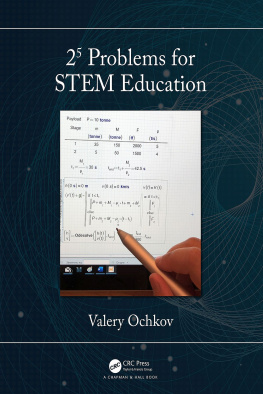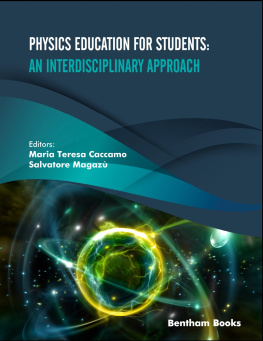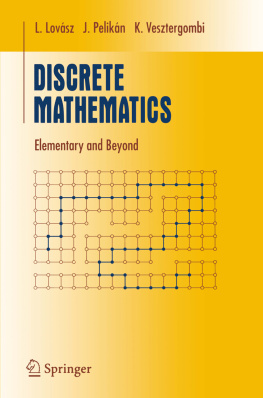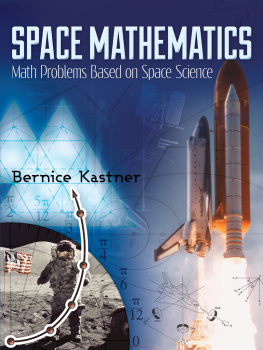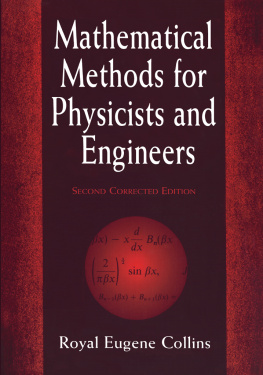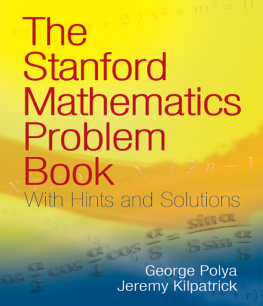25 Problems for STEM Education
25 Problems for STEM Education
Valery F. Ochkov
Moscow Power Engineering Institute

CRC Press
Taylor & Francis Group
6000 Broken Sound Parkway NW, Suite 300
Boca Raton, FL 33487-2742
2020 by Taylor & Francis Group, LLC
CRC Press is an imprint of Taylor & Francis Group, an Informa business
No claim to original US Government works
International Standard Book Number-13: 978-0-367-34525-9 (Hardback)
This book contains information obtained from authentic and highly regarded sources. Reasonable efforts have been made to publish reliable data and information, but the author and publisher cannot assume responsibility for the validity of all materials or the consequences of their use. The authors and publishers have attempted to trace the copyright holders of all material reproduced in this publication and apologize to copyright holders if permission to publish in this form has not been obtained. If any copyright material has not been acknowledged please write and let us know so we may rectify in any future reprint.
Except as permitted under U.S. Copyright Law, no part of this book may be reprinted, reproduced, transmitted, or utilized in any form by any electronic, mechanical, or other means, now known or hereafter invented, including photocopying, microfilming, and recording, or in any information storage or retrieval system, without written permission from the publishers.
For permission to photocopy or use material electronically from this work, please access www.copyright.com (http://www.copyright.com/) or contact the Copyright Clearance Center, Inc. (CCC), 222 Rosewood Drive, Danvers, MA 01923, 978-750-8400. CCC is a not-for-profit organization that provides licenses and registration for a variety of users. For organizations that have been granted a photocopy license by the CCC, a separate system of payment has been arranged.
Trademark Notice : Product or corporate names may be trademarks or registered trademarks, and are used only for identification and explanation without intent to infringe.
Visit the Taylor & Francis Web site at
http://www.taylorandfrancis.com
and the CRC Press Web site at
http://www.crcpress.com
In memory of Alexey Ochkov
Contents
The author expresses deep gratitude to colleagues and friends for their help in writing this book: Natalia Slivina, Elena Bogomolova, Jana Kalova, Julia Chudova, Natalia Ochkova, Katarina Pisai, Gizem Karaali, Inna Vasileva, Irina Kirichenko (ladies first), Evgeny Nikulchev, Massimiliano Nori, Fred Kohlhepp, Alan Stevens, Werner Exinger, Michael Kirsanov, Alexey Sokolov, Vladimir Chudov, Alvaro Dias, Luc Mekes, Alvaro Falconi, Mati Hainloo, Sergey Fedorovich, Alexander Eliseev, Alexander Bobriakov, Sergey Khorkov, Volker Lehner, Sasha Gurke, Andreas Look, Viktor Korobov, Alexander Solodov, Vitaly Samsonov, Aung Thu Ya Tun and Jury Fedorov.
The author is immensely grateful to Massimiliano Nori, Fred Kohlhepp Alan Stevens, and Dmitry Petrov for their great help in translating this book into English and for valuable comments.

Valery F. Ochkov is a Professor at Moscow Power Engineering Institute (Technical University, MPEI, www.mpei.ru) in the Department of Theoretical Basics of Thermal Engineering (TOT), founder and general manager of Trieru (www.trie.ru) an engineering consulting firm that develops simulators and analytical software for the power industry. He also works at Joint Institute for High Temperatures (www.jiht.ru) of the Russian Academy of Sciences and at Moscow High School at MPEI. He is a member of the working group on thermodynamics of the International Association for the Properties of Water and Steam (IAPWS) and PTC Mathcad Community (https://community.ptc.com).
He has authored more than 25 books in Russian and English and numerous journal articles on the use of math software for solving the problems in thermodynamics, heat and mass transfer, and fluid dynamics. Professor Ochkov is one of the creators of WaterSteamPro, an application for simulating thermophysical properties of water and steam and also a co-creator of web calculations for the Elsevier/Knovel website.
Teaching of Informatics, Mathematics, Physics, Chemistry with Mathematical Packages
Or
Between Scylla and Charybdis
The history of the development of methods for solving problems in mathematics, physics and chemistry in school and at university is, among other things, the history of struggling with computational tools . First (in the oral calculations classes, for example), the use of pen and paper was forbidden; then (when studying calculation with a stick pen on paper), the calculator was forbidden; and, finally, when solving more complex problems, using a computer with modern mathematical programs, such as Mathematica, Maple, MATLAB, Mathcad, SMath, etc. (or, rather, computer programs), though not explicitly prohibited, was alleged to be the equivalent of solving simple problems (such as 65 times 9, for example) with a calculator. This prohibition was not applied to the computational tools themselves when specially selected examples in computer science and programming classes were being taught, but only to their use to solve problems in arithmetic, trigonometry, linear algebra and mathematical analysis classes. However, modern schoolchildren and students do not understand this; for them the computer is ubiquitous in both work and play.
With mental calculation, everything is more or less clear. These exercises are wonderful gymnastics for the mind (see Study 3). The use of calculators in these classes is equivalent to the addition of sports simulator hydraulic boosters. Counting column can also be considered as a gym for the mind and good motor skills for the hands. But there is another reason. We must be able to do mental calculations in the absence of pencil and paper; further, we must be able to calculate with pencil and paper, in the absence of a calculator, etc. Howeverto get fire by friction if there are no matches at hand; to be able to determine cardinal points through the trees in the forest, if there is no compass or navigator at hand; to be able etc. Unfortunately, or fortunately, with the development of civilization, we have forgotten how to do mental calculation, to obtain fire by friction, to orient ourselves on the terrain by natural signs, etc. The schoolteacher of the author of this book did not tire of repeating in the lessons on arithmetic, that if we, his students did not learn to count quickly and accurately in the mind or, at least, on a sheet of paper, we would be weighed and cheated in stores. Now this motivation to develop an oral calculation does not work anymore, because in modern supermarkets, modern methods of hanging and counting are used.
Opponents of the use of modern computer solutions for school and university tasks in mathematics, physics, chemistry, etc., also rely on a number of other arguments, which they, however, do not openly talk about.
First, and very unfortunately, many schoolteachers and university teachers simply cannot work with modern computer mathematical programs and/or do not know about their capabilities. These teachers have mastered the computer, but at the level of office programs (text editor, table processor, email, work on the Internet) and the basics of operating (file system, etc.), but they do not want to go further, or cannot, justifying it by saying that such programs are harmful to learners.

